- About This Report
- Sustainability At Afrasia Bank Limited
- Pillar 1: Workplace Responsibility – Being An Employer Of Choice (Human Capital)
- Pillar 2: Marketplace Responsibility: Focusing On Client Centricity And Quality (Financial Capital, Manufactured Capital And Intellectual Capital)
- Pillar 3: Environmental Responsibility (Natural Capital)
- Pillar 4: Social Responsibility (Social & Relationship Capital)

PILLAR 3: ENVIRONMENTAL RESPONSIBILITY (Natural Capital)
Management of our natural resources is of up most importance for the Bank. We wish to steadily integrate environmental consciousness in everything we do. In this section, we have explored various aspects of environmental management at AfrAsia.
Electricity Consumption
GRI 302-1
Around 21% of the electricity produced by Mauritius comes from renewable sources (Mauritius Renewable Energy). It is our responsibility to ensure that we manage our energy consumption in an efficient and responsible manner.
In this financial year 18-19, the total electricity consumption was around 515,882.47 kWh as compared to 502,977 kWh for the previous year. Although there has been an increase in number of staff by 20.83%, as well as additional installation of hardware and other equipment consuming electricity, overall increase of electricity consumption has gone up by 2.57 % only. However, if consumption per head is computed, there has effectively been a noticeable decrease in consumption, which is a testament to AfrAsians being more efficient in their management of electricity at work.
| FINANCIAL YEAR | Average No Staff* | Electricity Consumption-kWh | Average per Head kWh |
|---|---|---|---|
| 18 - 19 | 406 | 515 882 | 1271 |
| 17 - 18 | 336 | 502 977 | 1497 |
*Average number of staff was used as number of employees fluctuate on a monthly basis.
- Electricity consumption has increased by 2.57 %
- Number of staff – increased by 20.83%
Given that the Bank is currently on a growth phase, we are not using these figures as benchmark. However, a monthly monitoring is done in order to investigate any irregular and abnormal peak in electricity consumption.
An online awareness campaign will be done in the upcoming months to promote awareness on responsible energy management and we will present a project on how to responsibly manage energy at AfrAsia.
Waste Management
A complete review of our waste strategy is currently in progress. As a Bank, our main types of wastes are as follows:
- Paper
- Electronic Waste (E-Waste)
- Plastics and others
-
Paper
-
E-Waste
GRI 306-2
Electronic waste also known as E-Waste is a major challenge for the Bank. These are packed with harmful materials that are toxic for the environment if not properly disposed of. Many of the components of E-Waste can also be reused and recycled with minimum harm to the ecosystem.
The sustainability and facilities department collaborated on a project with BEM Recycling, a recycling company for E-waste in order to responsibly dispose of electronics no longer being used at AfrAsia.
Collection Date Items Collected Quantity in Kgs 28/02/2019 1 Printer, 32 Laptops, 2 IPAD, 1 Cheque Scanner, 31 Mobile Phones and 3 Iphones 156.64 31/05/2019 36 Laptops, 1 Paper Shredding & 14 Mobile Phones 129 Total Quantity Collected 285.64
DARE And Sustainability
For this new FY, the culture ambassadors will promote the sustainability concept for every event/initiative that the group will be organizing by:
- Using ceramic or bio-degradable plates/utensils for events; and
- Recycling every cartons/used paper/bio-degradable plates used.
The DARE Culture Ambassadors Group wishes to positively impact and influence all staff, by encouraging them in adopting the People, Planet and Profit approach in the activities that meet the needs of the enterprise and its stakeholders today while protecting, sustaining and enhancing the human and natural resources that will be needed in the future.
Sourcing Policy
GRI 308-2
Our Procurement Policy Framework sets forth the expectations for our suppliers in terms of environmental sustainability. We reserve the right to refuse entering into business with suppliers that have proven records of misconduct in their environmental practices.
This year, the sustainability department along with our sustainability champion from the procurement department will focus on finding ways to assess suppliers on their environmental practices in a practical manner.
Radio Frequency Identification (RFID) Technology
The Bank has implemented RFID that allows the near-real-time information management of visitors, assets and inventory.
- Visitors Management System (VMS) with RFID Technology - ensures proper tracking of visitor’s data and customers entering the bank. The impetus behind this initiative is to protect our people and Bank’s premises while enhancing customer experience and take decisions based on visitor behaviour/profile analytics.
- Asset Tagging System (ATS) – RFID tagging of all assets/inventory
Through this system, which automatically uploads the relevant information to an online database, we have become more efficient in asset and inventory management.
In the future, we hope to use this technology to improve on our environmental sustainability through its potential to support Green supply chain management practices.